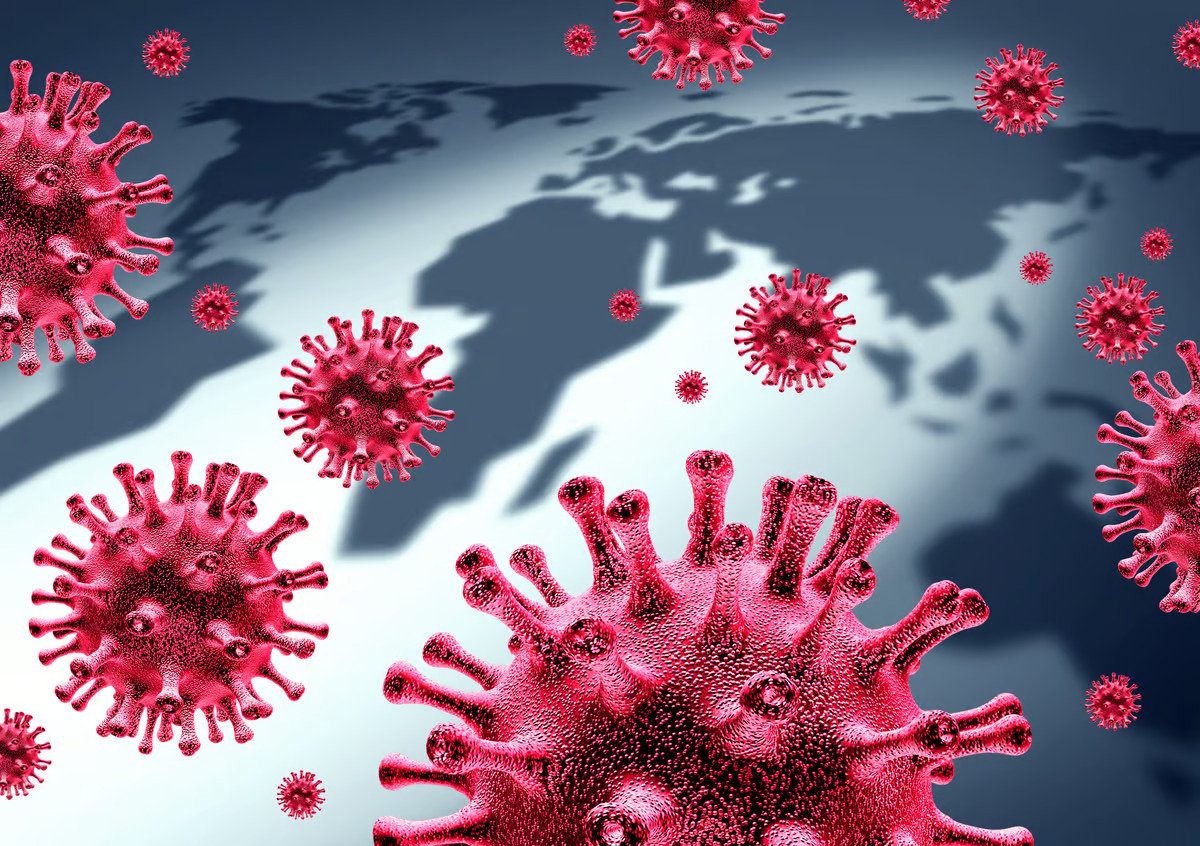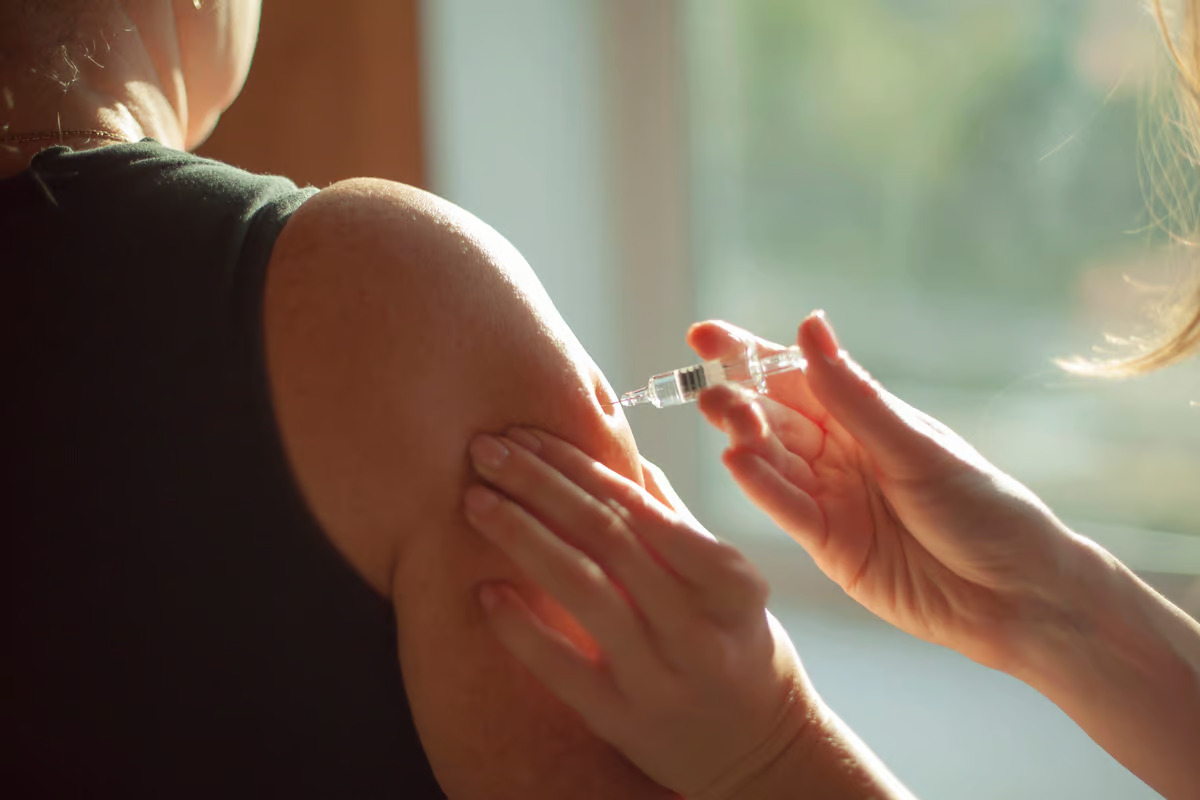The man, confirmed to be over 65 years old and who had underlying health issues, battled severe respiratory symptoms before succumbing to the virus this week. Fortunately there is no evidence of human-to-human transmission yet, so the pandemic risk remains low – but experts are concerned we’ve learned nothing from COVID-19’s advance, which has now claimed more than seven million lives around the globe.
The issues are multifaceted – societal, governmental and genetic – which together have the potential for another ‘unprecedented’ health catastrophe. So we’ll attempt to break those down a little, given the skepticism, misinformation and ‘pandemic fatigue’ that spread (no pun intended) once COVID-19 infection rates began to decline and stabilize.
Firstly, genetic testing of samples taken from the upper respiratory tract of the Louisiana person confirmed it was highly pathogenic avian influenza (HPAI) A(H5N1) virus, which has been circulating in non-human animals since 2020. Yet it was of the D1.1 genotype strain, more closely related to that seen in wild birds and poultry than the B3.13 variant circulating in cows – which has infected dairy farm workers.
However, research identified “low frequency mutations in the hemagglutinin gene” in one of these samples, which is not a virus ‘fingerprint’ in the D1.1 strain. This mutation was not seen in samples taken from birds on the man’s property, either. This suggests that a mutation to the virus occurred after the person had become infected by it.
This is both good … and not so good. Post-infection mutation and no human-to-human transmission suggests whatever the viral changes, it’s not one that hugely concerns epidemiologists. It would be far worse for someone to become infected with an already altered H5N1 D1.1 strain, which would most likely point to the virus getting closer to cracking the complex code of human-to-human infection.
“The worry is, the more you let this sort of run wild … the more chances you have for this sort of mutation to not only occur, but to then get out and infect someone else, then you start a chain reaction,” Louisiana State University scientist Rebecca Christofferson told AFP this week.
Further analysis identified that the mutation has the potential to more efficiently bind to cells in the upper respiratory tract in humans, which existing avian influenza strains have been unable to do. And, obviously, experts are concerned that each time the virus proves more adept at causing severe human infection, the more likely it will also figure out how best to jump between people. The mutation was also seen in a critically ill Canadian teen hospitalized in November. (No further updates on his condition have been released.)
Fortunately, the mutation had no greater resistance to current H5N1 antivirals, and will likely help inform the development of updated bird flu vaccinations.
“These data indicate the viruses detected in respiratory specimens from this patient are closely related to existing HPAI A(H5N1) CVVs [candidate vaccine viruses] that are already available to manufacturers, and which could be used to make vaccines if needed,” researchers wrote in a recent US Centers for Disease Control and Prevention (CDC) report.

The second issue concerning scientists is the haphazard testing for the virus in birds and cows, which is essential for monitoring mutations that pose a higher risk to humans. Zoonotic viruses tend to have an evolutionary ‘practice makes perfect’ existence – one may be contained in a species or group of animals, such as birds, for years, but, as we saw with COVID-19, if it lands on the right genetic ‘recipe’ for easy transmissibility, containment becomes increasingly difficult. Fortunately, the current H5N1 pathogen has not yet fine-tuned that side of its biology.
“The problem is that this is how it could start,” said Marion Koopmans, a virologist at the Erasmus University Medical Center in the Netherlands, who added that human risk remains low but that “there is not really an effort to contain” H5N1 in US cattle, which was first recorded in March 2024.
“The biggest error the US has made is its slow and weak response to the cattle outbreak,” Tom Peacock, a virologist at the Imperial College London, told AFP.
Intensive farming practices also provide the perfect reservoir for viruses to jump between animals in close proximity, which can lead to mutations that are centered around better transmission.
“We’ve been studying the family tree of this virus for 25-odd years, and this is probably the nastiest form of the virus that we’ve seen,” said Dr. Richard Webby, who directs the World Health Organization (WHO) Collaborating Center for Studies on the Ecology of Influenza in Animals and Birds at St. Jude’s Children’s Research Hospital. “So the fact that it finally did cause a fatal infection here is tragic but not surprising.”
Right now, surveillance is key, since we don’t know how this virus is going to progress – if it does. Counting bird deaths is passive data collection, and real-time genetic analysis is essential. This month, the US government has dedicated an additional US$306 million to bolster H5N1 surveillance programs and research.
Which brings us to the third challenge: Recent events and ideologies. Experts are concerned about the incoming US administration and, in particular, what potential influence the proposed new health and human services secretary, Robert F. Kennedy Jr, will have. His well-documented views on vaccine safety and raw milk advocacy has many scientists worried. In June 2024, researchers found that H5N1 in raw milk can survive, even when refrigerated, for at least five weeks.

There has also been growing skepticism and distrust of institutions charged with controlling responses and disseminating health orders in the wake of virus outbreaks. One analysis of public sentiment in the wake of the 2009 H1N1 (swine flu) outbreak showed that people were becoming increasingly critical of institutions such as the World Health Organization and wary of novel vaccines and the role of pharmaceutical companies.
“Public mistrust may have its proximate origins in the 2005–2006 H5N1 outbreak, but potentially hark back to earlier affairs like the counterproductive 1976 swine flu vaccination campaign or even the Tuskegee syphilis experiments that have left a lingering legacy of mistrust in some social groups,” researchers noted in their study published in PLOS One. “A clear undercurrent of conspiracy thinking is present in these response patterns, corroborating other, qualitative studies. The pattern of mistrust also holds for perceptions of the media, who are largely perceived as crying wolf and also suspected of ulterior motives.”
Not surprisingly, distrust is at an all-time high following the COVID-19 pandemic, with researchers finding that Americans of all backgrounds are more skeptical about the authorities coordinating the official health messaging and response – from the CDC to medical professionals administering vaccines.
“In every sociodemographic group in this survey study, trust declined substantially over the course of the pandemic, with lower trust likely representing a barrier to getting vaccinated or receiving boosters,” said Roy H. Perlis, Associate Chief of the Department of Psychiatry at Massachusetts General Hospital. “Strategies may be needed to rebuild this trust to achieve public health priorities.”
And a glance at the comments section on any social media post about the current H5N1 situation, or on X/Twitter in general, highlights how a potential new pandemic poses unprecedented challenges. A 2023 study in Nature‘s Scientific Reports analyzed commentary from around 100 million Facebook users who had expressed vaccine hesitancy prior to the COVID-19 pandemic.
“Distrust and its associated mis/disinformation – however defined – is now a widespread threat to public health,” the researchers noted in the study. “The pandemic exacerbated this issue as many people turned to their trusted online communities for advice and to share distrust of official health messaging. Within a month of the US national emergency declaration, Facebook – the largest and most widely used social media platform – saw a 50% increase in messaging and 70% increase in time spent [on the site], driving its monthly active users to 2.6 billion.”
Another 2023 study published in Vaccine: X, which looked at data from residents in 113 countries, found that, again, a growing distrust of institutions – in this case, government – was the key driver in how people felt about getting a novel jab.
“Our findings confirm that willingness to be vaccinated against COVID-19 is positively linked to trust in government, and negatively linked to distrust of government,” the researchers wrote. “Engagement with different information sources also appears related to vaccine hesitancy: online information consumption, sharing and fact-checking material online are associated with slightly lower willingness to get vaccinated, though the positive association with consumption of traditional media is slightly larger in magnitude.”
And in a study from last year, published in BMC Public Health, The University of Manchester researchers identified the “perfect storm” that took pandemic response distrust to a level we haven’t seen before. And, it would appear, that trust is not coming back anytime soon.
“These implications may already be apparent, where new data has suggested that MMR (measles, mumps, and rubella) vaccination rates are at a 10-year low since the start of the pandemic, and other childhood immunizations rates have also fallen,” said Stephanie Gillibrand, Research Fellow at The University of Manchester. “Wider social inequalities, intersecting with experiences of marginalization during the pandemic, have long-lasting and widespread implications when it comes to vaccination – and public health policy must recognize this broader context for future public health crises and vaccination drives.”
While the US Biomedical Advanced Research and Development Authority (BARDA) has stockpiled hundreds of millions of pre-pandemic H5N1 bulk vaccine doses, the disease-science world has been vocal about its frustrations over the “wait and see” approach to another pandemic – whether it’s H5N1 or another zoonotic pathogen.
“With fewer tools at the public health community’s disposal, a new pandemic could potentially spread even faster than COVID-19 did, overwhelming hospitals and morgues more quickly, putting more stress on health care workers, and causing more deaths – even if the causative virus isn’t more lethal than SARS-CoV-2,” researchers noted in The New England Journal of Medicine. “Most troubling, we believe, is the apparent inability of politicians and pundits to understand that a new pandemic may look different from the previous one, threatening different populations and presenting different trade-offs.
“Certain key community-level mitigation measures, such as school closures – which might be far more important, should a new pathogen be associated with higher mortality among young people than SARS-CoV-2, as has been seen in multiple avian influenza outbreaks – are now likely to face political, legal, and popular resistance. The blanket nature of new restrictions on public health authority and certain mitigation measures, especially in an environment rife with misinformation and attacks on public health workers, may deter officials from making evidence-based decisions that could help protect vulnerable populations.”
While H5N1 was first detected in poultry in 1966, and outbreaks among birds has been seen in the years since, this Highly Pathogenic Avian Influenza (HPAI) strain has by far proven to be the most deadly since its identification in 2020. To date, 66 people in the US have tested positive for H5N1, according to the CDC. But it has been confined to people working in close proximity to cows and poultry, and presented as a mild infection with isolated symptoms such as eye redness. Of course, it’s worth reiterating that the CDC currently considers the pandemic risk to be low.
Following news of the Louisiana man’s death, WHO spokesperson Dr. Margaret Harris told media in Geneva that the H5N1 virus is “not circulating in humans but jumping into humans” who are exposed to poultry or dairy cattle, adding “we’re not seeing sustained circulation.”
However, since virus evolution is dynamic – and the mutation process and its potential health threat are hard to pre-empt – things can change rapidly. The COVID-19 virus – SARS-CoV-2 – evolved directly or indirectly from a beta-coronavirus in the SARS-like virus group that circulates in Asian bats and pangolins.
“The extremely high mutation rates of viruses are not matched by any other organism in the kingdom of life,” researchers noted in a 2016 study published in the journal Viral Pathogenesis. “The high mutation rates of viruses, coupled with short generation times and large population sizes, allow viruses to rapidly evolve and adapt to the host environment. This has important implications for the pathogenesis of viral infections.”
However, thanks to new technology, real-time epidemiological modeling now empowers scientists with the tools to track and predict pathogenic alterations.
“The increasing numbers of viral sequences has led to unprecedented observation of viruses as they evolve, from laboratory experiments, from evolution within a host, and from epidemiological sequences of patients around the globe,” the researchers continued. “[This] is opening the door to a better understanding of factors that facilitate adaptation and lead to disease. By establishing the rules that govern viral evolution, research is empowering the design of new strategies that control, treat, and possibly eradicate viral threats.”
Source: Medical Xpress View gallery – 3 images
–

























